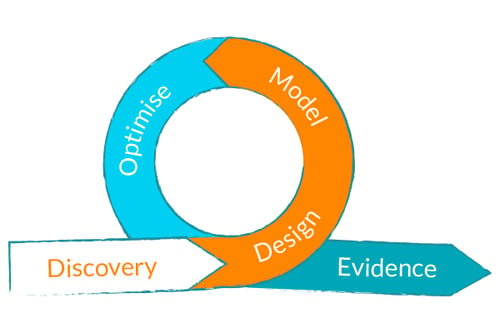8th September 2023
By 2025, business-outcome-based SLA's will be the predominant success measure of outsourced relationships, rising from 15% in 2021 to over 70%
Gartner
The commercial relationship between companies and their service providers is evolving. Previously, companies would simply purchase a service and hope it led to better results. They’d focus on basic metrics like how often the service was available or how long it took to get support. The realisation of real-world benefits, like improving customer satisfaction or speeding up order processing, was the company’s problem.
But things are different now. Companies aren’t just looking for service; they want to see tangible business improvements. This means both the company and the service provider need to collaborate more closely. Instead of just delivering a service, providers are now expected to help drive actual business outcomes. It’s a partnership where both sides share in the success and challenges.
"Outcomes are the next competitive playing field"
Gartner
Business outcomes are becoming a critical differentiator in a highly competitive market. Successful organisations will be those that can clearly demonstrate how their technology adds real value in terms of the customer’s business objectives and aspirations. To do this, service providers will need to steer the complex task of understanding, managing, and evidencing the outcomes to be delivered in the dynamic and complex service environment.
For business outcome-based SLAs to work, there must be an agreed, meaningful, and accessible definition of the desired business outcome. By having a clear definition, we can better assess, measure and evidence the actions taken towards achieving those results. There are five core activities to deliver the transparency and control needed to manage business outcomes successfully.

Figure 1 - Iterative business outcome management framework
Develop a shared understanding of the client's required business outcomes and their key measures.
It is essential not to make assumptions. Recognise that your perception of relevant business outcomes may differ from the client's reality.
Start with the strategic objectives, e.g., increase revenue, and break these down into specific outcomes. Identify the key performance indicators that demonstrate and track the result, e.g., increase order processing by a percentage.
Build a 'Big Picture View' of the service in the broader business context.
The design links the business objectives, organisational structure, people, processes, and technology elements. The aim is to simplify the complexity of the business environment creating a familiar and meaningful context for service delivery conversations with clients.
The design also identifies the data sources and metrics to feed into the key measures and guide required actions. Think in terms of both lagging and leading metrics. Over time leading metrics should positively impact the lagging metric or suggest the need for remediation actions to meet the objectives. You must also understand the collection method and frequency of the metrics data and consider the provenance and quality of the data, as this will influence stakeholder trust and acceptance of the results.
Build a dynamic model to create a 'business digital twin'.
Integrate the identified data sources and metrics into the 'big picture view', creating a dynamic representation of the business context.
This model becomes a simple interface for exploring service delivery options, understanding the impact of actions, and evaluating progress on an ongoing basis. Integrating the data sources generates an initial performance baseline providing input into service delivery planning and the development of the service roadmap.
The model will need updating as the client's business landscape changes and new elements and data sources are identified. Maintaining the accuracy and validity of your model is an iterative process and fundamental to your success.
Optimise and actively manage actions to ensure the desired results are achieved.
The ability to meet your contractual commitments depends on the active management and iterative evaluation of progress.
Effective optimisation will interrogate and analyse the data in the model to identify improvement opportunities and diagnose any issues when a course correction is required. By monitoring the impact of the identified actions, it is simple to close the loop on continuous service improvement initiatives and ensure they deliver value.
Framing this analysis in the business context ensures priorities are aligned and breaks down business value clearly into contributing operational metrics. Success is achieved by maximising the delivery of business results throughout the contract lifecycle in line with the client's evolving needs.
Inform decision-making and drive action.
Conversations about value and impact must be meaningful and interactive to be effective. A collaborative environment that supports clear communication will remove friction and make progress transparent.
The model you have developed will create a shared understanding and an anchor for service delivery conversations. As a dynamic framework, the model will allow you to explore and interrogate performance data, structure value conversations, make recommendations and evidence the delivered business outcomes.
Effectively delivering against business outcomes requires an integrated and dynamic approach. Empowered service delivery teams can work in tandem with their clients to drive mutual success and competitive differentiation. Thus, transforming the client's perception of the service provider from the vendor to that of business enabler and partner.
If your customers are asking you to deliver business outcomes but need help knowing where to start, talk to Hublsoft today.
©Hublsoft 2025, All Rights Reserved
Hublsoft Limited is a company registered in England and Wales, with company number 11869832 and VAT number GB 356290095
Registered Office Address - The Catalyst, Baird Lane, York, England. YO10 5GA